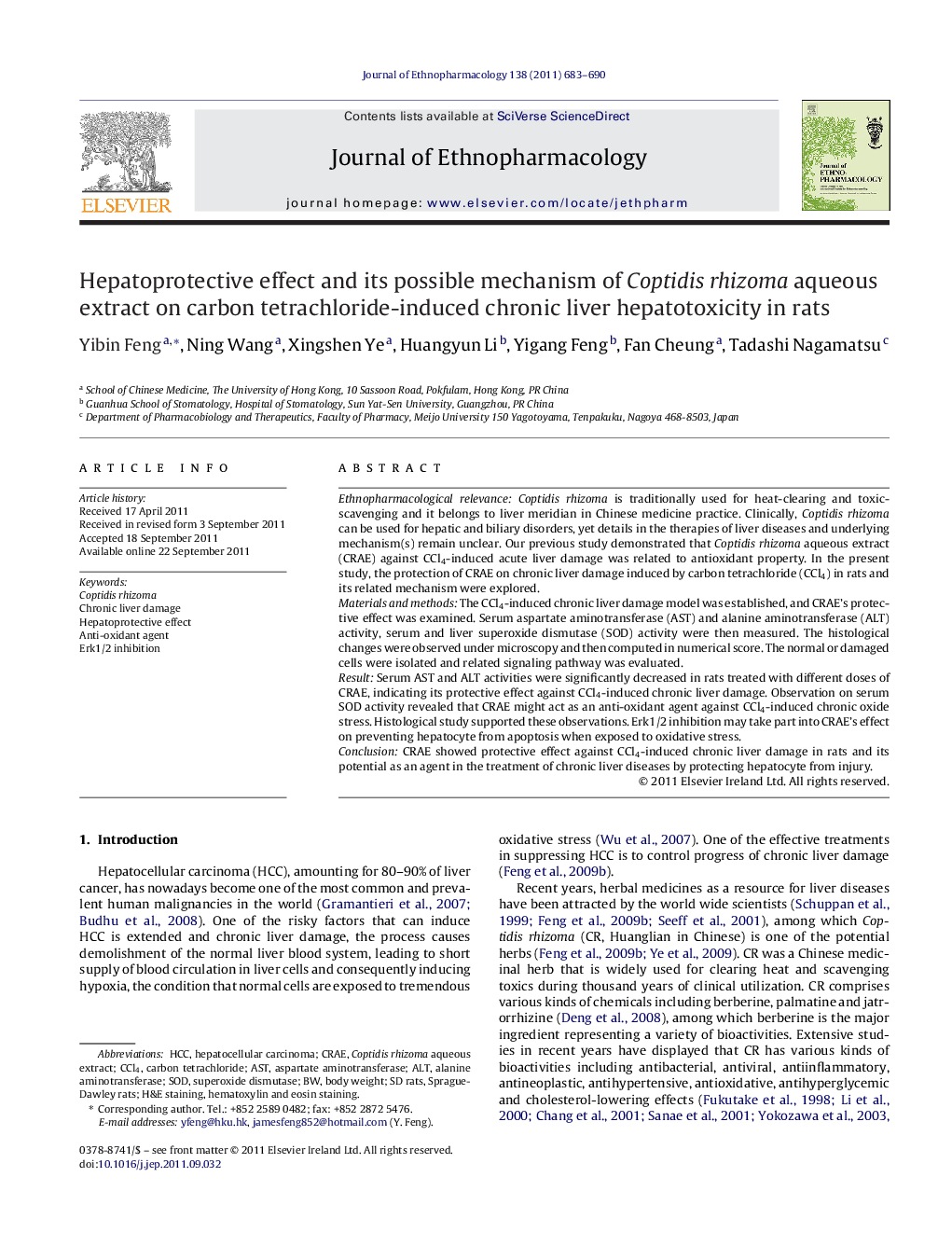| کد مقاله | کد نشریه | سال انتشار | مقاله انگلیسی | نسخه تمام متن |
|---|---|---|---|---|
| 5839306 | 1123992 | 2011 | 8 صفحه PDF | دانلود رایگان |

Ethnopharmacological relevanceCoptidis rhizoma is traditionally used for heat-clearing and toxic-scavenging and it belongs to liver meridian in Chinese medicine practice. Clinically, Coptidis rhizoma can be used for hepatic and biliary disorders, yet details in the therapies of liver diseases and underlying mechanism(s) remain unclear. Our previous study demonstrated that Coptidis rhizoma aqueous extract (CRAE) against CCl4-induced acute liver damage was related to antioxidant property. In the present study, the protection of CRAE on chronic liver damage induced by carbon tetrachloride (CCl4) in rats and its related mechanism were explored.Materials and methodsThe CCl4-induced chronic liver damage model was established, and CRAE's protective effect was examined. Serum aspartate aminotransferase (AST) and alanine aminotransferase (ALT) activity, serum and liver superoxide dismutase (SOD) activity were then measured. The histological changes were observed under microscopy and then computed in numerical score. The normal or damaged cells were isolated and related signaling pathway was evaluated.ResultSerum AST and ALT activities were significantly decreased in rats treated with different doses of CRAE, indicating its protective effect against CCl4-induced chronic liver damage. Observation on serum SOD activity revealed that CRAE might act as an anti-oxidant agent against CCl4-induced chronic oxide stress. Histological study supported these observations. Erk1/2 inhibition may take part into CRAE's effect on preventing hepatocyte from apoptosis when exposed to oxidative stress.ConclusionCRAE showed protective effect against CCl4-induced chronic liver damage in rats and its potential as an agent in the treatment of chronic liver diseases by protecting hepatocyte from injury.
Coptidis rhizoma aqueous extract (CRAE) showed a potential therapeutic effect on CCl4-induced chronic liver damage in rats as the liver damage was largely improved after the treatment of CRAE.417
Journal: Journal of Ethnopharmacology - Volume 138, Issue 3, 8 December 2011, Pages 683-690